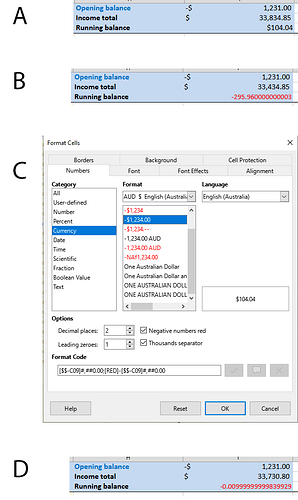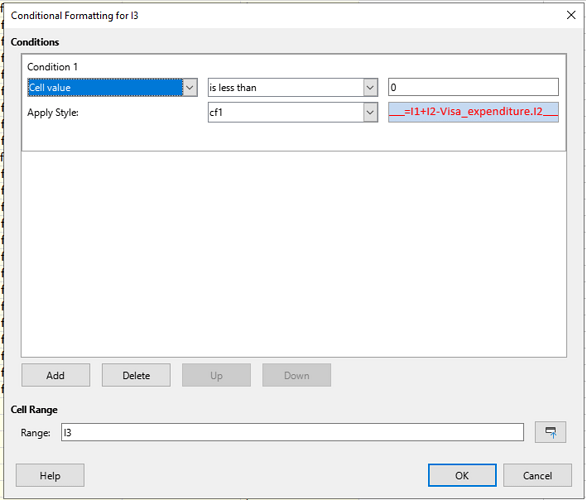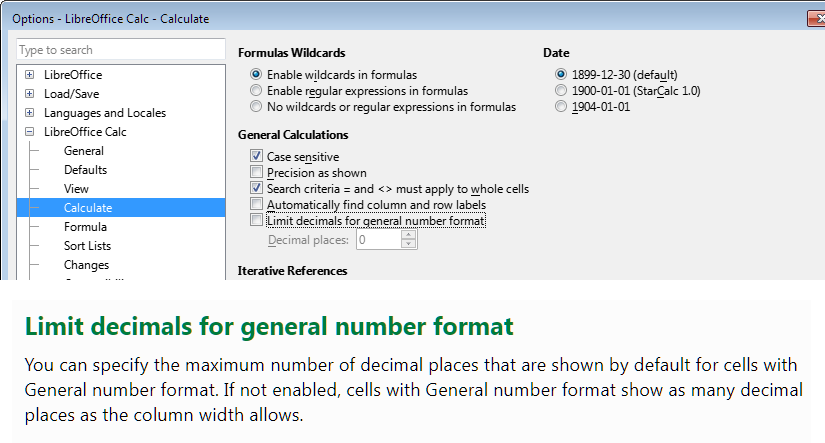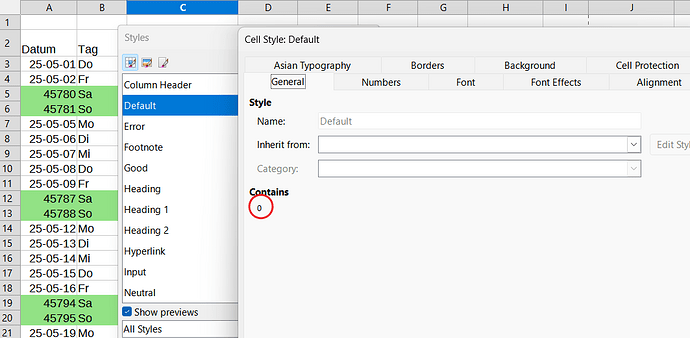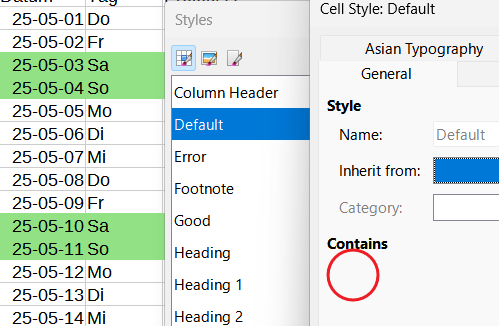I run a very small business and my accounting system is a reasonably complex workbook I created in Excel some years ago. Recently I shifted it to Libre Calc, and have found a few issues, mostly to do with syntax/search text requirements being slightly different between the two programs. I have fixed them all, but have discovered a strange bug to do with conditional formatting.
Each bank account has a pair of worksheets (income and expenditure) and these are summed up in various places. One of those places is a running total on each worksheet, just so I don’t have to keep flipping back to the summary worksheet all the time.
Now, those summary fields are formatted as 2 decimal place currency fields, and have conditional formatting such that when the balance goes negative, the text goes red. That’s it, nothing complex, and it works in excel perfectly.
However, in Calc, when the total in the fields is positive, the formatting is as expected, eg as in A
But, as soon as the field goes negative, only the red conditional formatting works, the original field formatting breaks (the dollar sign and 2 decimal point requirements go awol) and you get a weird result like B:
The formatting on that cell is set as in C:
Is this a known bug? I can simply toggle the correct and incorrect behaviour by simply forcing the cell to switch between positive and negative numbers.
Also, if you force the cell to exactly zero, the formatting works, but if you force it to -1, you get D:
All very odd, and looks like a calculation bug to me.

